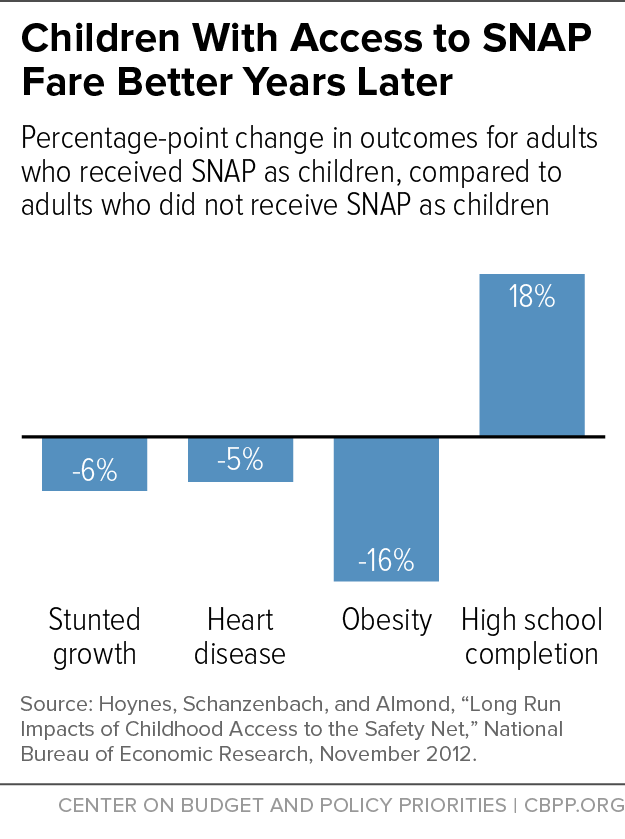BEYOND THE NUMBERS
Yesterday we examined how SNAP helps low-income families in the short term using data from two new resources, SNAP Matters and a Council of Economic Advisers (CEA) report. This research also shows that these short-term benefits can have long-term implications for families.
By reducing poverty and food insecurity, SNAP can have lasting effects on health and development, particularly for children. As the CEA report describes, research links food insecurity to a number of negative health outcomes, such as increased risk of heart disease and diabetes. Living in food-insecure households is also linked with nutritional deficiencies as well as negative behavioral, social, and academic outcomes with lasting consequences.
The CEA cites numerous studies finding that SNAP can improve children’s health, promoting their proper development over the long term. Children receiving SNAP face lower risks of nutritional deficiencies and poor health than they would without SNAP, which can lead to improved health over their lifetimes.
A study examining the rollout of SNAP (then called food stamps) across the country in the 1960s and 1970s provides evidence of this long-term impact. This study found that children in counties with access to SNAP in utero or early childhood had improved health conditions in adulthood — including lower rates of stunted growth, heart disease, and obesity — as well as higher rates of high school completion (see graph).
Another study found that providing SNAP to pregnant women can reduce the probability of low birth weight by 23 percent. As the CEA notes, there is “rigorous evidence that improvements in infant birth weight lead to better adult outcomes, including higher IQ, higher levels of educational attainment, and higher adult earnings.”
The CEA also cites studies finding that SNAP directly affects children’s success in school. One new study, for example, found that test scores among students in SNAP households are highest for those receiving benefits two to three weeks before the test, suggesting that SNAP can help students learn and prepare for tests. Short-term academic outcomes, in turn, are linked with longer-term outcomes in education and employment.
SNAP’s powerful short- and long-term impacts argue strongly for improving benefits to ensure that they last families throughout the month, as our first post in this series explained.

